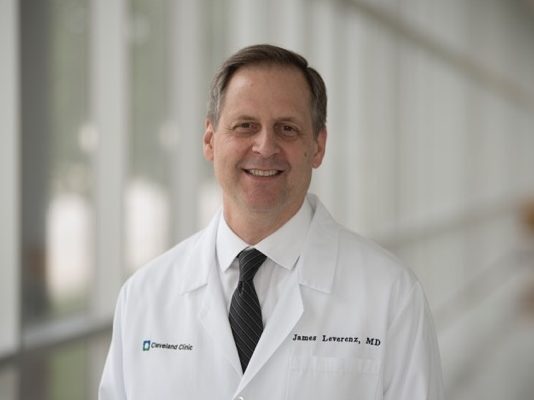
Director, CADRC
Over the past four years, with funding from the National Institute of Aging Alzheimer’s Disease Research Centers program, experts in the field of Alzheimer’s disease and related dementias from Case Western Reserve University, Cleveland Clinic Foundation, Louis Stokes Cleveland VA, and University Hospitals have collaborated to establish the Cleveland Alzheimer’s Disease Research Center (CADRC). As the Director of the CADRC, I am well aware of the complex nature of this cross-institutional research Center. However, over these four years, and with the immense effort my colleagues and collaborators at these key Cleveland Institutions, the common goal of advancing our knowledge of Alzheimer’s disease and Related Dementias the CADRC has become a success.
I cannot sufficiently thank the tireless support of my colleagues and collaborators, the unwavering support of the involved Cleveland institutions, the research support staff, the Cleveland community, and of course the research participants and their families and friends who have been generous in making our Center a success.
In the first four years the Clinical Core has successfully enrolled and followed over 225 individuals who have provided biospecimens, completed brain imaging, and contributed medical and memory testing data to the Center. Such a task is a challenge in and of itself, yet our Clinical Core has gone a step further and seamlessly developed a process across our two clinical sites, University Hospitals and Cleveland Clinic, to enroll participants and complete the tests and procedures offered through the Center. The participants have been recruited through various means; however, the Outreach, Recruitment, and Engagement Core has contributed a vast amount of time and effort establishing relationships within the community through dementia and ageing education, memory screenings, and research opportunities.
The CADRC goes beyond the recruitment and enrollment of research participants. Through the Biomarker Core, samples from our participants have been processed, analyzed, and stored for future research. Data from both our Clinical and Biomarker Cores have been successfully uploaded to the National Alzheimer’s Coordinating Center thanks to our Data Management and Statistics Core. The Neuropathology Core has performed autopsies and analyzed archival brain tissue and contributed this data to the CADRC database. This clinical, biological, and neuropathological data can be utilized by researchers across the nation to further understand Alzheimer’s disease and related Dementias. Such data can be utilized to support discovery of new therapies by connecting scientists with resources to test promising hypotheses. Through our Center, we not only promote the use of novel ideas in research, but also the education of young researchers. The Research Education Component has built a platform for early career investigators in which they can further develop their research skills through completion of independent projects under the guidance of senior investigators.
Together we plan to increase our understanding of these devastating disorders so that those of us who are clinicians can provide more hope to patients and their families. Please visit our website for more information about the Cleveland Alzheimer’s Disease Center: https://clevelandadrc.org/ or call 1-833-331-2372 or email us contact@clevelandADRC.org.
Sincerely,
James B. Leverenz, M.D.
Director, Cleveland Alzheimer’s Disease Research Center
Lou Ruvo Center for Brain Health, Cleveland Clinic
Jane and Lee Seidman Endowed Chair for Advanced Neurological Research and Education Cleveland, Ohio
